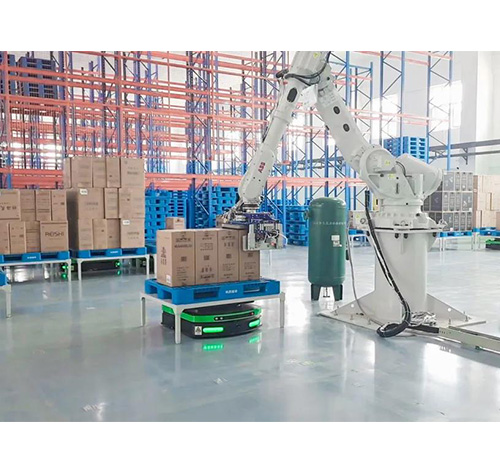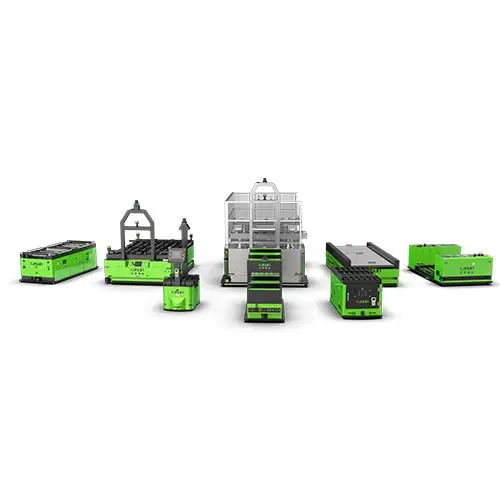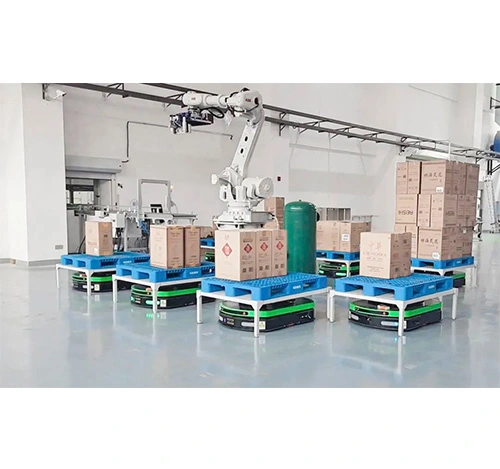 Focus on AGV industry for 18 years
Focus on AGV industry for 18 years
 Focus on AGV industry for 18 years
Focus on AGV industry for 18 years
With the outbreak of the new energy vehicle market, the production capacity of power batteries is gradually expanding, and the requirements for its performance are getting higher and higher. Usually the automation level of battery production is directly related to the quality of the battery, so the application of full automation in the battery industry is increasingly concerned. With the continuous intervention of intelligent equipment in the production and assembly of power batteries, AGV/AMR has also been widely used by major cell and battery pack manufacturers.
As the global penetration rate of electric vehicles will continue to increase, it is expected that the compound annual growth rate from 2021 to 2025 will reach 34.4%. In 2025, the overall global demand for lithium batteries will reach 1223GWh, and power batteries will account for 75.2%.
At present, under the trend of large-scale development of power batteries, material cost reduction has limited the reduction of BOM cost of power batteries. Through innovative manufacturing processes, introducing intelligent and digital technologies, improving product quality, production efficiency, and reducing defect rates have become urgent for battery companies. need.
In terms of specific production and manufacturing, the power battery production process has its own characteristics. For example, the current lithium battery manufacturing still faces some difficulties:
There are extremely high quality consistency requirements for the manufacturing process; complex process routes; interaction, compatibility, and collaboration between a large number of automation equipment; high-precision requirements for process control; intelligent processing and processing of large amounts of data in the entire production process. Operation and maintenance; rapid response to customer needs.
In short, in the power battery industry with a high level of automation, under the pressure of expansion and delivery, it is rapidly changing to an intelligent manufacturing production mode. As an important part of intelligent manufacturing, smart logistics can effectively improve production efficiency and product consistency, reduce operating costs, open up the closed loop of data in the factory, and promote extreme manufacturing in the industry.
The general trend of smart logistics in the power battery industry: automation, intelligence, and flexibility, which is also an important trend in the large-scale production of power batteries. If these needs are realized with the help of AGV vehicles, the convenience of raw material storage and handling in the power battery industry can be greatly improved, the loss of misoperation in the sorting process can be reduced, and the operation efficiency can be improved.
AGV vehicle application in power battery production process :
At present, battery companies are paying more and more attention to the intelligent management of their raw material warehouses, line warehouses and finished product warehouses, and are more and more inclined to use automated three-dimensional warehouses to improve the utilization of factory space and the convenient access to batteries; at the same time, AGV/AMR is in power The battery production process section can replace the manual transportation of materials, semi-finished products and finished products between processes, which is convenient for the supervision of production materials. The importance of AGV/AMR in the connection of battery production line processes and the line side warehouse is increasing.
In addition, the perfect combination of battery production process and automated logistics system can realize the automation and intelligence of the whole process of battery production through storage equipment, conveying equipment, loading area equipment, NG station and other special machines to achieve the expected indicators of production enterprises.

① Front -end equipment:
The demand for intelligent logistics in the production process is concentrated in the raw material warehouse, pole piece AGV vehicle handling, coating AGV vehicle handling, and pole piece warehouse;
② Mid-end equipment:
It needs to be equipped with an intelligent logistics system for pole roll AGV handling, diaphragm AGV handling, and cell pulling tape;
③ Back-end equipment:
The back-end intelligent logistics requirements include: chemical test logistics, static storage, battery cell pulling, manipulator assembly and disassembly, finished product storage, etc.
In the process of power battery production, smart logistics is designed according to the technological process and needs, providing customized solutions for smart logistics and intelligent dispatching system, and establishing and improving the intelligent production and logistics system solutions for new energy power batteries.





